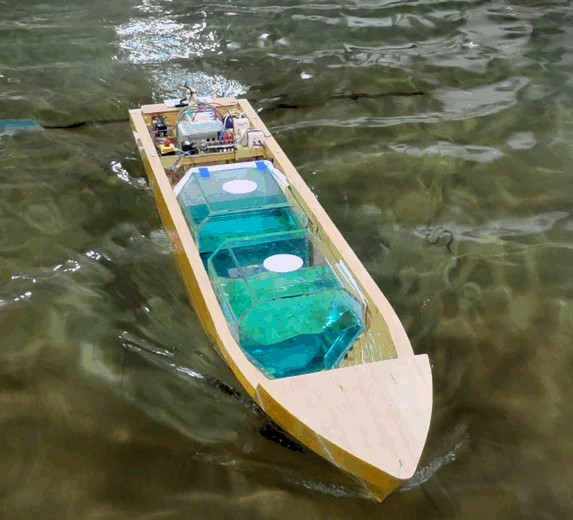If more ships use green ammonia as an alternative fuel in the future, a corresponding bunker infrastructure must also be created. Ship-to-ship refueling is an option for the flexible supply of seagoing vessels. In the DST sub-project “CF10_2.1 Bunker barge”, a corresponding small bunker vessel was designed for the market ramp-up and tested on a model scale. The large version of the bunker vessel is almost 60 m long and holds 1000 m³ of temperature-liquefied ammonia. To ensure that the ship can leave the port of Rostock largely independent of the weather and reach surrounding ports, it must be designed for the prevailing swell. The design was examined and demonstrated in extensive series of tests in the DST’s towing tank.
In resistance and self-propulsion tests, the estimates of the power requirement from previous design phases were initially confirmed and extended to various loading conditions and water depths. The interaction between hull and propeller was also analyzed on the basis of these tests. The model was then towed in rough seas to determine the additional power required for the rough seas. Finally, the most exciting tests of the series were carried out: the sea state tests with the free-running model. Here, the model can be remotely controlled by the test engineer or semi-automatically, and the journeys are recorded with a trajectory tracking system and other sensors on board. This allows the ship’s motion responses to wave excitation at different encounter angles to be analyzed. Another important aspect of the test campaign was the question of the ship’s behavior with partially filled tanks. The free surface in partially filled tanks reduces the floating stability and generates additional forces and moments in rough seas, which can strongly influence the ship’s movements. The following video shows a summary of the various model tests.











